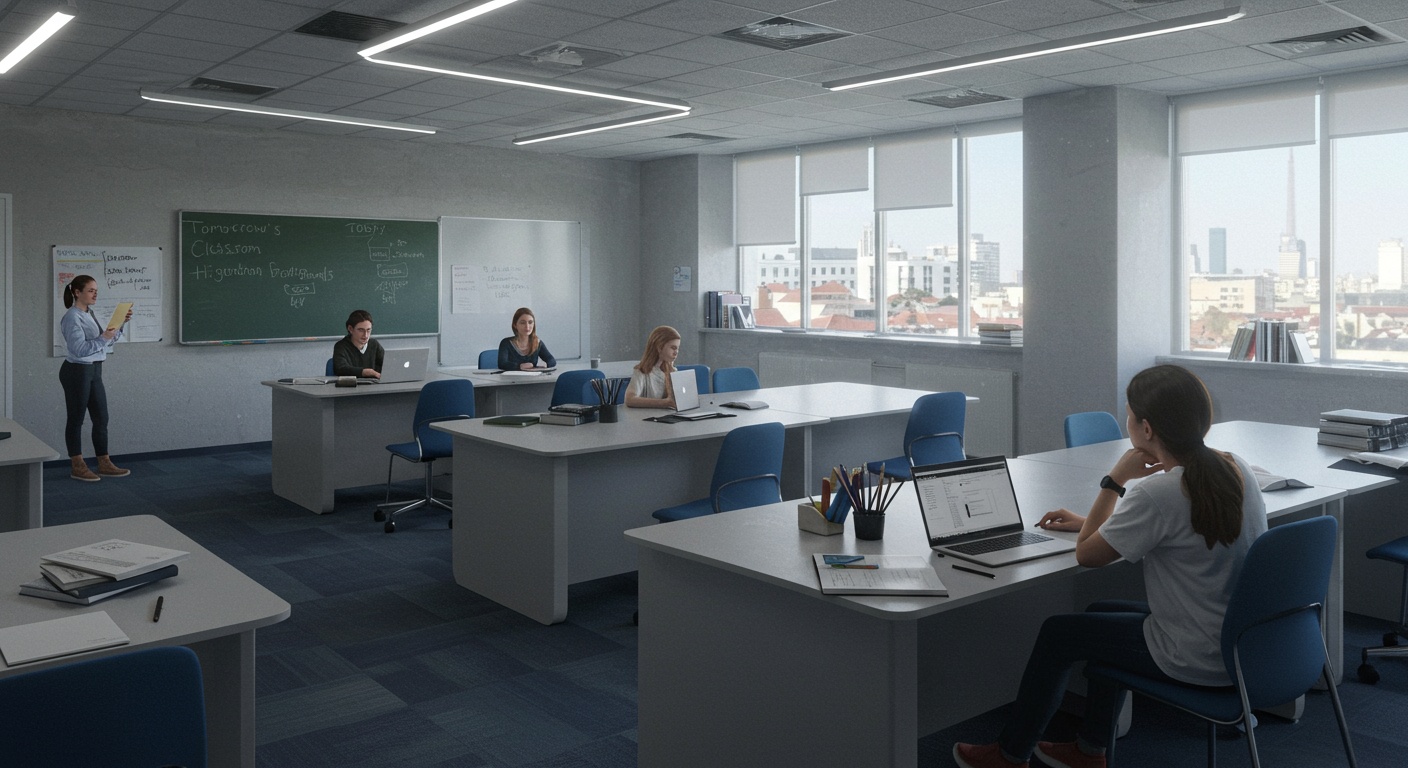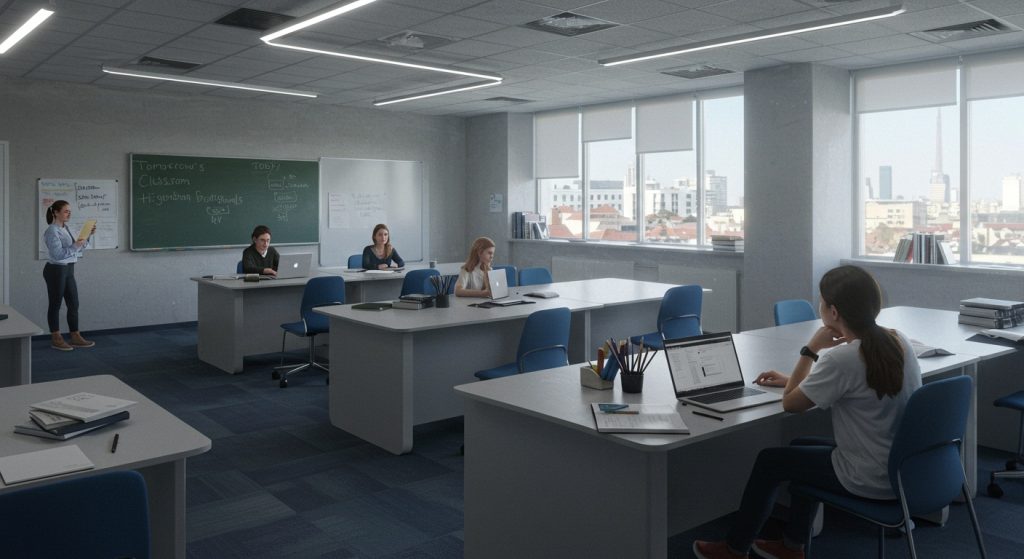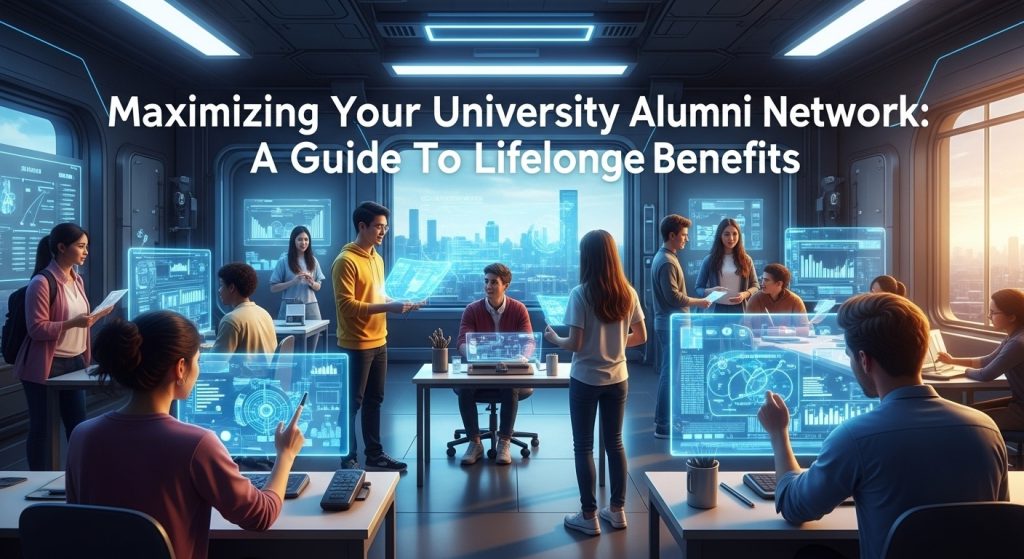The pedagogical landscape of higher education is undergoing an unprecedented transformation, driven by rapid technological advancements and evolving workforce demands. Curriculums for 2025 must proactively integrate emerging capabilities like generative AI literacy and advanced data analytics, moving beyond traditional content delivery. Institutions are now championing adaptive learning pathways and interdisciplinary studies, fostering agility and critical problem-solving skills essential for dynamic professional environments. This shift reflects a strategic pivot towards competency-based education and practical application, exemplified by the rise of industry-aligned projects and micro-credentials. Understanding these pivotal shifts provides crucial insight into the future trends in higher education curriculum, ensuring graduates are not just knowledgeable but truly future-ready.

The Age of Personalization: Tailoring Education to Every Learner
One of the most significant future trends in higher education curriculum is the dramatic shift towards personalized learning pathways. Gone are the days when a one-size-fits-all approach dominated the university experience. Today. Increasingly by 2025, curricula are being designed to adapt to individual student needs, learning styles. Career aspirations.
What is Personalized Learning?
Personalized learning, in the context of higher education, means customizing the educational experience to fit the unique requirements of each student. This goes beyond simply offering elective courses; it involves leveraging data, technology. Flexible course structures to create a bespoke educational journey. Think of it as a GPS for your learning, guiding you along the most efficient and effective route to your destination.
- Adaptive Learning Platforms
- Learning Analytics
- AI-Powered Tutoring and Feedback
These platforms, often powered by Artificial Intelligence (AI), review a student’s performance, identify areas of strength and weakness. Then recommend tailored content, exercises, or even alternative explanations. For example, if a student struggles with a particular mathematical concept, the system might provide additional practice problems or link to a different video tutorial that explains it from another angle.
Universities are increasingly using data analytics to interpret how students interact with course materials, what modules they find challenging. How they progress. This data helps instructors and curriculum designers refine courses in real-time and proactively offer support.
Imagine submitting an essay and receiving instant, constructive feedback from an AI tutor on grammar, structure. Even argument coherence. While human instructors remain crucial, AI can augment their capacity to provide timely and individualized support, allowing students to iterate and improve faster.
Many institutions, like Arizona State University (ASU), have been pioneers in scaling personalized learning through their online programs, using adaptive platforms to cater to diverse student populations. This approach helps reduce attrition rates and improves learning outcomes by ensuring students receive support precisely where and when they need it.
Skills-Based and Competency-Based Education: Beyond the Traditional Degree
The rapidly evolving job market demands more than just a degree; it requires demonstrable skills. This realization is driving another core future trend in higher education curriculum: the pivot towards skills-based and competency-based education (CBE). This model prioritizes what a student can do rather than just what they have studied.
- Skills-Based Education
- Competency-Based Education (CBE)
Focuses on developing specific, marketable skills that are directly applicable to industry needs. This might involve modules on data analysis, digital marketing, project management, or cybersecurity.
An educational framework where students advance based on their demonstrated mastery of specific competencies, not on the amount of time they spend in a classroom. Learning is self-paced. Assessment verifies the acquisition of skills and knowledge.
This trend is closely linked to the proliferation of micro-credentials, badges. Certificates. Instead of a single four-year degree, students can earn smaller, verifiable credentials for specific skill sets. These can then be “stacked” together to build a full degree or a specialized portfolio.
Consider the comparison:
| Traditional Degree Model | Skills-Based/Competency-Based Model |
|---|---|
| Fixed duration (e. G. , 4 years) | Flexible duration (based on mastery) |
| Focus on credit hours and course completion | Focus on demonstrated competencies and learning outcomes |
| Broad disciplinary knowledge | Specific, marketable skills |
| Single, comprehensive credential | Stackable micro-credentials, badges, certificates |
| Assessment via exams, papers | Assessment via projects, portfolios, practical demonstrations |
Western Governors University (WGU) is a prime example of a fully competency-based institution where students progress by demonstrating mastery rather than seat time. Similarly, platforms like Coursera and edX offer professional certificates and specializations developed with industry partners, providing tangible skills that employers value. IBM, for instance, has collaborated with universities to offer specific certifications in areas like AI and cloud computing, bridging the gap between academia and industry.
For students, this means actively seeking out programs that clearly articulate the skills they will gain. For institutions, it involves closer collaboration with industries to identify in-demand skills and redesigning curricula to deliver them effectively, often through project-based learning and real-world simulations.
Interdisciplinary and Transdisciplinary Learning: Breaking Down Silos
The complex challenges of the 21st century—from climate change to global pandemics—cannot be solved by a single discipline. This understanding is fueling a critical future trend in higher education curriculum: the move towards interdisciplinary and transdisciplinary learning.
- Interdisciplinary Learning
- Transdisciplinary Learning
Involves integrating knowledge and methods from different academic disciplines to address a common problem or topic. For example, studying environmental issues might involve biology, economics. Public policy.
Takes it a step further, not only integrating disciplines but also transcending academic boundaries to include knowledge from outside academia, such as industry experts, community leaders, or indigenous knowledge systems. It often focuses on real-world problem-solving.
Why This Shift?
The modern workforce thrives on collaboration and the ability to connect disparate ideas. Employers increasingly seek graduates who can think holistically, synthesize insights from various fields. Communicate effectively across disciplinary divides. For instance, developing a smart city requires expertise in urban planning, data science, engineering, sociology. Public administration.
- Joint Degree Programs
- Problem-Based Learning
- Collaborative Projects
Offering degrees that inherently combine two or more fields (e. G. , “Bioengineering and Society” or “Digital Humanities”).
Structuring courses around real-world problems that require insights from multiple disciplines. Students work in teams, mimicking professional environments.
Encouraging students from different majors to work together on capstone projects or research initiatives.
Many universities are establishing dedicated centers for interdisciplinary research, such as MIT’s Media Lab, which brings together designers, scientists. Artists. Another example is the emergence of “design thinking” programs, which apply a human-centered, iterative approach to problem-solving, drawing from engineering, art. Social sciences. This ensures that the future trends in higher education curriculum are not just about what is taught. How it is taught and applied.
Global and Experiential Learning: Preparing for a Connected World
In an interconnected world, global awareness and practical experience are invaluable. This makes global and experiential learning crucial future trends in higher education curriculum. These approaches aim to equip students with cultural intelligence, adaptability. Real-world problem-solving skills.
- Virtual Exchange Programs
- Globally Relevant Curricula
- Language and Cultural Immersion
Leveraging technology to connect students with peers and instructors from different countries, fostering cross-cultural dialogue and collaboration without the need for physical travel.
Incorporating diverse perspectives, international case studies. Global challenges into all subjects, not just international relations.
Encouraging the study of foreign languages and offering opportunities for cultural immersion, even if virtually.
- Internships and Co-ops
- Service Learning
- Simulations and Labs
Providing structured opportunities for students to gain hands-on professional experience in their field.
Integrating community service with academic learning, allowing students to apply classroom knowledge to real societal needs.
Creating realistic environments where students can practice skills, test theories. Make decisions in a controlled setting. For example, medical students using high-fidelity mannequins or business students running a simulated company.
Universities are partnering with NGOs and international organizations to offer field study opportunities that immerse students in global challenges, from sustainable development in rural communities to public health initiatives in developing nations. Northeastern University’s co-op program is a long-standing example of embedding extensive work experience directly into the academic timeline, making graduates highly desirable to employers. This practical exposure is a cornerstone of the future trends in higher education curriculum.
Sustainability and Ethical AI: Integrating Values into Learning
As the world grapples with climate change and the ethical implications of emerging technologies, two vital future trends in higher education curriculum are the integration of sustainability and ethical considerations, particularly concerning Artificial Intelligence (AI).
It’s no longer sufficient for environmental studies to be confined to a single department. Sustainability principles are being woven into diverse curricula:
- Engineering
- Business
- Sociology
- Arts and Humanities
Designing energy-efficient buildings and sustainable transportation systems.
Developing ethical supply chains and green business models.
Examining the social impacts of climate change and environmental justice.
Exploring environmental narratives and cultural responses to ecological crises.
This holistic approach ensures that graduates, regardless of their major, interpret their role in fostering a sustainable future.
The rapid advancements in AI present immense opportunities but also significant ethical dilemmas concerning privacy, bias, algorithmic fairness. Job displacement. Universities are recognizing the imperative to educate students not just on how to use AI. How to think critically about its societal impact.
- AI Ethics Courses
- Digital Literacy and Citizenship
- Bias in Algorithms
Dedicated modules or courses on the ethical implications of AI, often drawing from philosophy, law. Computer science.
Beyond basic computer skills, this involves understanding data privacy, cybersecurity, combating misinformation. Responsible online behavior.
Educating students, especially those in data science and computer science, on how biases can be embedded in algorithms and the importance of designing equitable AI systems. For instance, explaining concepts like dataset bias and algorithmic transparency.
Many leading tech universities, like Stanford and Carnegie Mellon, have established centers dedicated to AI ethics and societal impact, integrating these discussions into their computer science and engineering programs. Moreover, business schools are increasingly incorporating Environmental, Social. Governance (ESG) criteria into their finance and management curricula. These integrations reflect a commitment to producing graduates who are not only skilled but also ethically responsible global citizens, a hallmark of the evolving future trends in higher education curriculum.
Conclusion
The landscape of higher education is not merely evolving; it is rapidly transforming, demanding that curricula for 2025 move beyond traditional disciplines into dynamic, skills-focused ecosystems. The key takeaway is clear: adaptability is paramount. We must actively integrate emergent technologies like generative AI into coursework, not just as tools. As subjects for critical analysis, fostering interdisciplinary projects that mirror real-world complexity. For instance, a recent university-industry hackathon I observed beautifully showcased how students from diverse fields collaborated to solve a pressing societal challenge using AI, underscoring the shift from rote memorization to practical application and ethical innovation. Institutions must commit to continuous faculty development, equipping educators with the pedagogical tools to navigate this new terrain. My personal tip for both educators and students is to embrace a mindset of lifelong learning, seeking out micro-credentials and collaborative opportunities that build a portfolio of future-ready competencies, whether in data literacy or ethical AI design. The future of education isn’t about teaching more content. About cultivating the capacity to learn, unlearn. Relearn. By proactively shaping curricula today, we empower tomorrow’s graduates to thrive in an unpredictable yet opportunity-rich world. For a deeper dive into modern learning modalities, explore the nuances of Virtual Learning Unpacked: The Pros and Cons of Online University Courses Explored.
More Articles
Beyond Passion: Key Factors Influencing Your University Course Selection for Career Success
Research with Integrity: Navigating Ethical Considerations in University Research Practices
Maximizing Your University Experience: A Guide to Essential Student Support Services Available
Beyond Graduation: How University Alumni Networks Supercharge Your Career Development
Virtual Learning Unpacked: The Pros and Cons of Online University Courses Explored
FAQs
So, what’s really changing in college classrooms by 2025?
It’s all about making education more relevant and future-proof. Think less rote memorization and more hands-on skills, personalized learning paths. Integrating new tech like AI directly into how we learn and what we learn about.
How will AI actually impact what students learn?
AI isn’t just a tool; it’s becoming a core subject and a way to customize learning. Curriculums will teach students how to work with AI, interpret its ethics. Apply it in their fields, while AI tools might help tailor course content to individual student needs and pace.
Are traditional degrees still going to be vital, or is it all about skills now?
Degrees will definitely still matter. There’s a huge shift towards demonstrable skills. Employers are looking for specific competencies, so curriculums are being redesigned to ensure graduates not only have a degree but can also prove they’ve mastered the critical skills needed for the workforce, often through practical projects and real-world scenarios.
Will classes still be in lecture halls, or is everything going online?
Expect a lot more blended and hybrid models. While online learning offers flexibility, the value of in-person collaboration and immersive experiences is also clear. Many courses will likely combine the best of both worlds, using digital platforms for content delivery and in-person sessions for deeper discussion and collaborative work.
What about skills like critical thinking or teamwork – are those getting more focus?
Absolutely! ‘Soft skills’ are becoming non-negotiable ‘power skills.’ Curriculums are increasingly embedding critical thinking, problem-solving, creativity. Effective communication across all subjects, often through interdisciplinary projects that mimic real-world challenges where diverse skills are needed.
How will colleges keep up with how fast the world changes?
It’s a big challenge. Universities are getting more agile. They’re collaborating more with industry to grasp future needs, offering more flexible micro-credentials. Focusing on teaching students how to learn so they can adapt to new data and technologies throughout their careers. Continuous curriculum review will be key.
Can I really get a personalized learning experience?
Yes, that’s a major goal. With data analytics and AI, institutions aim to offer more adaptive learning paths, letting students potentially move at their own pace, choose electives that truly align with their career goals. Receive targeted support based on their individual strengths and weaknesses. It’s about making education fit the student, not the other way around.



